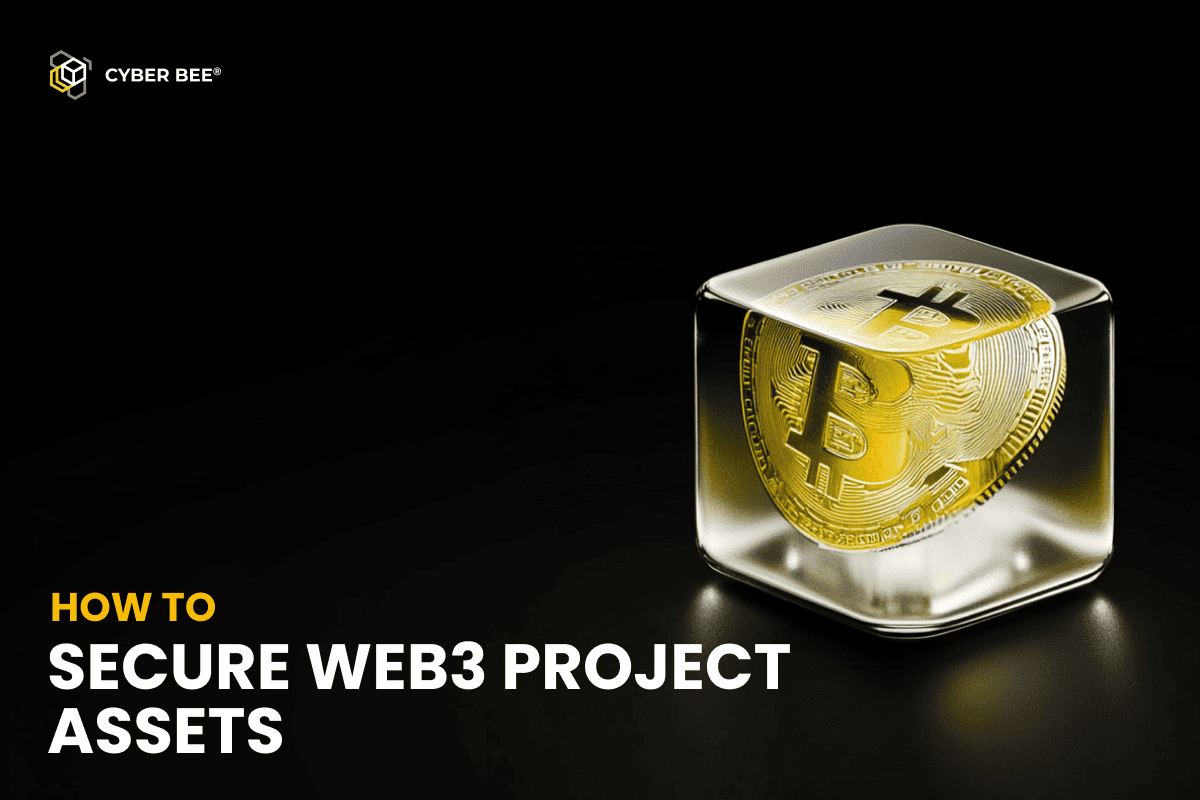Imagine a network where trust isn’t a question, transparency reigns supreme, and innovation explodes. That’s the world of blockchain ecosystems – a revolutionary force reshaping industries and empowering individuals. Buckle up, because we’re about to unveil the secrets behind this game-changing technology. We’ll delve into its core components, showcase real-world applications, and even equip you with a guide to build your own ecosystem. Get ready to unlock the future of blockchain, one block at a time!
Demystifying Blockchain Ecosystems
Blockchain technology is impressive, offering secure and transparent data storage. But it’s the vibrant ecosystem surrounding it that unlocks its true potential. Imagine a complex network: the blockchain itself is the secure foundation, but the magic happens with interconnected elements like developers, applications, and participants. This intricate web working together is what we call a blockchain ecosystem.
In simpler terms, a blockchain ecosystem refers to the network of elements that breathe life into blockchain technology. These elements include:
- Developers: The creative minds who build applications (dApps) on the blockchain.
- Applications (dApps): Software programs offering specific functionalities to users within the ecosystem.
- Participants: A diverse group including users, businesses, and even regulators who interact with the ecosystem.
- Protocols: The rules that govern interactions within the ecosystem, ensuring smooth and secure communication.
By working together, these interconnected components within a blockchain ecosystem facilitate a more powerful and impactful use of blockchain solution. Each element plays a crucial role in transforming various industries and aspects of our lives.
Key Characteristics of a Blockchain Ecosystem

Building upon the foundation of blockchain technology, a robust ecosystem thrives on a set of distinct characteristics:
- Decentralization: A cornerstone of blockchain, decentralization distributes power and control away from a single entity. Instead, participants collaboratively maintain the network through a consensus mechanism (e.g., Proof-of-Work, Proof-of-Stake). This eliminates central points of failure and fosters trust through a verifiable, distributed ledger technology.
- Distributed Ledger: The underlying blockchain acts as a shared and synchronized database across all participating nodes in the network. This distributed ledger ensures transparency and immutability of recorded information. Transactions and data entries are cryptographically secured in the blockchain space, making them tamper-proof and auditable.
- Consensus Mechanism: Maintaining network integrity and validating transactions requires a well-defined consensus mechanism. This mechanism dictates how participants agree on the state of the ledger and the validity of new entries. Popular consensus mechanisms include Proof-of-Work (PoW), Proof-of-Stake (PoS), and Byzantine Fault Tolerance (BFT).
- Security and Cryptography: Robust cryptographic techniques safeguard transactions and data stored on the blockchain. These techniques ensure confidentiality, integrity, and authenticity of information within the ecosystem. Cryptographic hashing functions guarantee data immutability, while asymmetric cryptography (public-key cryptography) enables secure communication and user authentication.
- Smart Contracts: Programmable contracts known as smart contracts reside on the blockchain and automate predefined agreements when specific conditions are met. Programmable contracts eliminate the need for intermediaries, streamline processes, and reduce transaction costs within the ecosystem. Blockchain ecosystem protocols contribute to this efficiency. Specialized blockchain development services contribute to this efficiency.
- Openness and Permissioning: Blockchain ecosystems can be categorized based on their level of openness and participant access. Public blockchains like Bitcoin are permissionless, meaning anyone can join and participate. Conversely, private blockchains are permissioned, where access is restricted to authorized participants, often used by enterprises for internal deployments. Consortium blockchains represent a hybrid model, where a pre-defined group of organizations collaborate and govern the network.
These characteristics, working in concert, create an environment of trust, security, and innovation that fuels the growth and potential of blockchain ecosystems.
Unveiling the 4 Pillars of a Blockchain Ecosystem
A thriving blockchain ecosystem rests on four fundamental components, each playing a crucial role in its success. Understanding these pillars is essential for appreciating the intricate workings of these dynamic environments.

1. Infrastructure: The Foundation of Underlying Blockchain Technology
The infrastructure layer forms the backbone of the ecosystem. It encompasses the core blockchain technology itself, including the chosen consensus mechanism (e.g., Proof-of-Work, Proof-of-Stake) and the distributed network of computers (nodes) that validate and record transactions. This layer ensures the core functionalities of the blockchain:
- Security: Robust cryptographic techniques safeguard the network and stored data.
- Transparency: All participants have access to the immutable record of transactions on the ledger.
- Immutability: Once recorded, data cannot be altered, ensuring trust and accountability. The chosen underlying blockchain technology significantly impacts the ecosystem’s characteristics, such as scalability, security, and transaction speed.
2. Protocols: The Language of Interaction within a Blockchain Network
Protocols define the rules and functionalities that govern communication and interaction within the ecosystem. They act as the language for different components like smart contracts and decentralized applications (dApps) to interact with the blockchain and each other. Many blockchain protocols facilitate this interaction. Popular protocols include:
- Ethereum Virtual Machine (EVM): A widely adopted protocol that enables developers to build dApps compatible with the Ethereum blockchain.
- Hyperledger Fabric: A modular framework designed for building private and permissioned blockchain networks.
3. Applications: Building on the Promise of Blockchain Ecosystems
Value Proposition for Blockchain Networks: Blockchain technology offers a unique value proposition for various industries and applications. Here’s how it translates to the functionalities within the ecosystem:
- Decentralization and Trust: By distributing power and control, blockchain eliminates central authorities and fosters trust through verifiable and transparent data on a shared ledger. This empowers users and opens doors for new business models that rely on collaboration without intermediaries.
- Security and Immutability: Robust cryptography safeguards data stored on the blockchain, ensuring its authenticity and tamper-proof nature. This immutability creates a reliable audit trail and reduces the risk of fraud or manipulation.
- Efficiency and Automation: Smart contracts automate predefined agreements and processes, streamlining operations and reducing costs across various applications. This eliminates the need for manual verification and third-party involvement, leading to faster transactions and improved efficiency.
- Programmability and Innovation: Blockchain platforms offer a programmable environment for developers to build innovative decentralized applications (dApps) across different sectors. This fosters a vibrant ecosystem of creativity and disrupts traditional models in finance, supply chain management, and more.
Decentralized applications (dApps) are the real-world use cases that leverage the power of blockchain technology. These applications tap into the core functionalities of the blockchain to provide innovative solutions across various industries. Examples include:
- DeFi (Decentralized Finance): dApps enabling peer-to-peer lending, borrowing, and trading of financial instruments without traditional intermediaries.
DeFi, however, is not without its limitations. Issues like scalability, complex user interfaces, and impermanent loss can hinder user experience and adoption. To address these shortcomings, a new generation of DeFi protocols is emerging, collectively referred to as DeFi 2.0. DeFi 2.0 builds upon the core principles of DeFi to offer innovative solutions and enhance overall usability. Dive deeper into DeFi 2.0 and its potential to revolutionize decentralized finance in our follow-up article: What is DeFi 2.0?
- Supply Chain Management: dApps tracking the movement of goods throughout the supply chain for enhanced transparency and efficiency.
Smart contracts, self-executing contracts residing on the blockchain, are a key component of many dApps. These contracts automate predefined agreements, eliminating the need for intermediaries and streamlining processes.
4. Participants: The Lifeblood of Blockchain Ecosystems
The human element forms the lifeblood of a blockchain ecosystem. Different participants play vital roles in its growth and development:
- Developers: Build and maintain the infrastructure, protocols, and applications that power the ecosystem.
- Users: Interact with dApps, contribute to the network’s growth, and drive demand for the ecosystem’s services.
- Miners/Validators: Secure the network by verifying transactions and adding new blocks to the ledger (depending on the consensus mechanism).
- Investors: Provide financial backing for promising projects, fostering innovation and ecosystem growth. The active participation and collaboration of these diverse stakeholders are essential for a blockchain ecosystem to thrive.
By integrating the value proposition of blockchain networks, this section now highlights how the four pillars work together to deliver unique benefits and unlock the potential of this transformative technology.
The Power of Blockchain Ecosystems

Blockchain ecosystems are revolutionizing industries by fostering a new era of transparency, security, and collaboration. These ecosystems transcend specific blockchain technologies and instead focus on the interconnected web of components that unlock transformative potential. By leveraging the core functionalities of blockchain – decentralization, immutability, and traceability – ecosystems are driving innovation across a diverse range of sectors:
- Supply Chain Management: Consortium blockchain ecosystems, where multiple companies collaborate on a permissioned network, are streamlining complex supply chains. For example, Bumble Bee Foods uses a blockchain platform to track tuna from catch to consumer, ensuring transparency and ethical sourcing. This not only builds trust with consumers but also improves efficiency and reduces fraud risks.
- Financial Services: Public blockchain ecosystems like Ethereum are powering the rise of Decentralized Finance (DeFi). DeFi applications enable peer-to-peer lending, borrowing, and trading of financial instruments without traditional intermediaries. This disrupts the traditional financial landscape, offering greater accessibility and potentially lower fees for users.
- Voting and Identity Management: Private blockchain ecosystems offer secure and tamper-proof solutions for voting systems and identity management. Governments and organizations are exploring blockchain to protect sensitive data and ensure the integrity of elections.
- Healthcare: Blockchain ecosystems hold promise for secure medical recordkeeping, efficient pharmaceutical supply chain management, and streamlined clinical trials. The secure and auditable nature of blockchain can empower patients with greater control over their health data.
- Internet of Things (IoT): As the number of interconnected devices continues to grow, blockchain ecosystems offer secure and scalable solutions for managing data generated by the IoT. This can enhance data security, automate processes, and enable new data-driven business models.
These are just a few examples of the transformative potential of blockchain ecosystems. As the technology matures and adoption grows, we can expect even more innovative applications to emerge across various industries.
Showcasing Prominent Examples of Blockchain Ecosystems

Diverse Applications Across Permission Models:
The world of blockchain projects is rich with variety, catering to different needs and industries. Let’s delve into some prominent examples across permission models:
Consortium Blockchain Ecosystem:
- Bumble Bee Foods Supply Chain: This consortium blockchain platform tracks tuna from “catch to consumer,” ensuring ethical sourcing and transparency. It exemplifies how collaboration within a closed ecosystem fosters trust and efficiency throughout the supply chain.
Public Blockchain Ecosystem:
- Ethereum (Public): As the pioneer of smart contracts, Ethereum has become a leading public blockchain ecosystem. Its open and permissionless nature fosters a vibrant developer community and a thriving minimum viable ecosystem (MVE) of decentralized applications (dApps). These dApps span various sectors, including DeFi protocols for peer-to-peer finance and NFT marketplaces for digital collectibles.
Regulatory Blockchain Ecosystem:
- Regulatory Reporting Platforms: A new wave of regulatory blockchain ecosystems is emerging to streamline compliance processes. These platforms securely share and verify regulatory data between businesses and government agencies, aiming to reduce administrative burdens and enhance transparency within the crypto ecosystem as a whole.
Permissioned Blockchain Ecosystems: Addressing Enterprise Boundaries
- Hyperledger Fabric (Private): Designed for building private and controlled networks, permissioned blockchain ecosystems like Hyperledger Fabric are ideal for scenarios involving collaboration between multiple enterprises. These ecosystems address the challenge of enterprise boundaries by establishing clear access control mechanisms. Only authorized participants can join the network, ensuring data privacy and defining governance rules that create trust and security for all participating organizations.
Example: Trade Finance Consortium: Imagine a consortium of banks leveraging a permissioned blockchain network for trade finance. This platform streamlines the complex process of issuing letters of credit and guarantees. Each bank maintains control over its data while collaborating securely with other consortium members. This not only improves efficiency but also reduces the risk of fraud by creating a single source of truth for trade transactions.
Additional Benefits of Permissioned Ecosystems:
Beyond addressing enterprise boundaries, permissioned ecosystems offer several advantages:
- Enhanced Efficiency: Streamlined workflows and automated processes within a controlled environment can significantly improve efficiency for collaborating enterprises.
- Increased Scalability: Permissioned ecosystems can be designed to handle high volumes of transactions specific to the consortium’s needs.
- Regulatory Compliance: Permissioned ecosystems offer a secure and auditable blockchain network that can facilitate compliance with relevant regulations within a specific industry.
Private Blockchain Ecosystem:
- Use Case Example: A healthcare consortium can leverage a private blockchain ecosystem to securely manage and share patient data. This ensures patient privacy while enabling authorized medical professionals to access critical information for diagnosis and treatment.
Additional Ecosystems:
The potential applications of blockchain ecosystems extend far beyond these examples. We can expect to see continued growth in areas like:
- Fishing Ecosystem: Tracking fish from catch to consumer can ensure sustainability and combat illegal fishing.
- Minimum Viable Ecosystems in Niche Sectors: Specific industries can develop their own focused ecosystems to address unique challenges.
- Marine Transport: Leading companies like Marine Transport International (MTI) are exploring the use of a blockchain ecosystem to improve transparency, efficiency, and security in global shipping operations.
- Beyond financial applications, blockchain technology is also transforming social media through Decentralized Social Networks (DSNs). DSNs offer users greater control over their data and privacy. For a comprehensive exploration of DSNs and their potential impact, refer to this article: Decentralized Social Networks and How They Work
By understanding these diverse ecosystems and their components (infrastructure, a blockchain protocol, applications, and participants), we gain valuable insight into ecosystem governance (decision-making structures) and ecosystem thinking (understanding the interconnectedness of these elements). This knowledge is crucial for navigating the ever-evolving landscape of blockchain technology.
Building Your Blockchain Ecosystem with Cyber Bee

While understanding existing ecosystems is crucial, navigating the landscape also involves the potential for building your own. As a leading blockchain development company, Cyber Bee can guide you through this exciting space.
This concise guide offers a step-by-step approach along with key considerations for those venturing into building their own blockchain ecosystem.
Building a Blockchain Ecosystem: A Step-by-Step Guide
- Define Your Niche and Purpose: The first step is to identify a specific problem or industry where blockchain technology can offer a clear value proposition. Is it supply chain transparency, secure identity management, or something entirely new? A well-defined niche attracts relevant participants and fosters a focused blockchain ecosystem. Cyber Bee can help you analyze market needs and identify the perfect niche for your innovative solution.
- Design the Architecture: Here, you’ll lay the technical foundation by considering key blockchain ecosystem components:
- Type of Blockchain: Public, Private, or Consortium? Cyber Bee’s experts will advise you on the most suitable blockchain type based on your specific needs (transparency, scalability, control).
- Consensus Mechanism: Proof-of-Work (PoW), Proof-of-Stake (PoS), or others? Our team will help you choose the most efficient consensus mechanism for validating transactions within your ecosystem.
- Scalability: Consider the expected volume of transactions and choose a solution that can handle future growth. Cyber Bee can help you design a scalable architecture to accommodate future expansion.
- Develop Core Protocols: Define the rules and functionalities that govern communication and interaction within your blockchain ecosystem. This includes essential components like:
- Governance: Establish a clear decision-making structure for network participants. Cyber Bee can assist you in designing a governance model that ensures fair and transparent decision-making within your ecosystem.
- Interoperability: Determine how your ecosystem will interact with other blockchain networks to facilitate data exchange and broader adoption. Our team can guide you in developing interoperability protocols for seamless communication with other blockchains.
- Foster a Developer Community: A vibrant developer community is essential for building and maintaining your ecosystem. By creating resources, documentation, and incentives, you can attract developers and encourage them to build on your platform. Cyber Bee can help you establish developer programs, provide technical support, and foster a thriving community around your ecosystem.
Key Considerations for Building a Blockchain Ecosystem with Cyber Bee
Weaving these considerations into the building steps helps address potential challenges:
- Technical and Resource Considerations: Building a blockchain ecosystem requires technical expertise and significant resources. Cyber Bee can bridge any skill gaps by providing experienced developers, architects, and security experts to complement your team.
- Business Model Funding: Develop a sustainable business model to fund the ongoing development and maintenance of your blockchain ecosystem. Cyber Bee can help you explore various funding options, including transaction fees, subscription models, or strategic partnerships.
- Data Ownership and Governance: Clearly defining data access and usage rights, along with establishing secure data sharing protocols, is crucial. Our team will guide you through data governance best practices and ensure compliance with relevant data privacy regulations.
- Network Governance: Determine how network participants will make decisions and resolve disputes. The chosen consensus mechanism will play a significant role in network governance. Cyber Bee will advise you on the most suitable governance model for your specific ecosystem.
Remember: Building a successful blockchain ecosystem is a complex undertaking. By partnering with Cyber Bee, you can leverage our expertise and navigate the landscape with greater confidence. Together, we can help you contribute to the ever-evolving world of blockchain technology.
The Future of Business: How Blockchain Projects are Revolutionizing Business Processes
The potential of blockchain projects extends far beyond the current landscape. As technology matures and adoption accelerates, several exciting trends are poised to shape the future, particularly in how they transform business processes:
- Streamlined Workflows: Blockchain projects can automate manual tasks and eliminate repetitive paperwork, leading to faster turnaround times and reduced operational costs. For example, programmable contracts can automatically execute agreements upon fulfillment of predefined conditions, significantly streamlining processes like procurement and logistics.
- Enhanced Transparency: Blockchain ecosystem creates a secure and immutable record of transactions, providing all authorized participants with real-time visibility into every step of a process. This fosters trust and accountability across the value chain, improving collaboration and reducing the risk of errors or fraud. Imagine a supply chain management system where every participant, from raw material suppliers to distributors, can track the movement of goods in real-time, ensuring product authenticity and preventing delays.
- Decentralized Decision-Making: Blockchain network empowers businesses to move away from centralized control and embrace a more distributed decision-making structure. This can lead to increased efficiency and agility, as processes no longer require approval from a single authority. For example, a consortium blockchain platform for trade finance can facilitate automated approvals and faster settlements, streamlining international trade transactions.
These are just a few examples of how blockchain projects are transforming business processes. Looking ahead, emerging technologies like Decentralized Finance (DeFi) and Non-Fungible Tokens (NFTs) represent the tip of the iceberg. Blockchain ecosystems will further foster the development and integration of even more transformative technologies, revolutionizing areas like:
- Identity Management: Secure and decentralized identity management systems built on blockchain can empower individuals with greater control over their personal data.
- Data Ownership: Blockchain can provide individuals with clear ownership rights over their data, creating a more transparent and user-centric data economy.
- Asset Tokenization: Real-world assets like property, art, or even intellectual property can be tokenized on a blockchain, facilitating fractional ownership and promoting greater liquidity in previously illiquid markets.
By embracing blockchain technology and its transformative potential, businesses can unlock a future of streamlined workflows, enhanced transparency, and a more collaborative way of operating. As these trends continue to evolve, we can expect blockchain to become a fundamental building block for the future of business.



